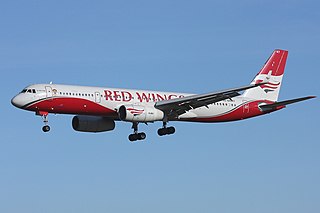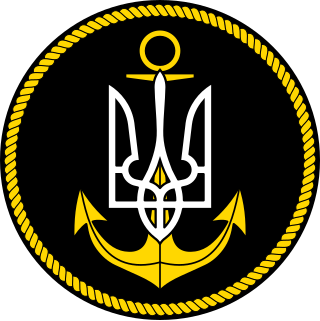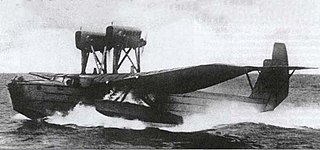Related Research Articles
Pre-revolutionary Imperial Russia did not have a single national unified system but instead relied on those provided by the manufacturers of the aircraft, like Sikorsky Ilya Muromets or Anatra Anasal.

The Tupolev Tu-204 is a twin-engined medium-range narrow-body jet airliner capable of carrying 210 passengers, designed by Tupolev and produced by Aviastar-SP and Kazan Aircraft Production Association. First introduced in 1989, it is intended to be broadly equivalent to the Boeing 757, with slightly lower range and payload, and has competitive performance and fuel efficiency in its class. It was developed for Aeroflot as a replacement for the medium-range Tupolev Tu-154 trijet. The latest version, with significant upgrades and improvements, is the Tu-204SM, which made its maiden flight on 29 December 2010. In April 2022, United Aircraft Corporation (UAC) announced plans to assemble 70 Tu-214s by 2030

The Tupolev ANT-20 Maxim Gorky was a Soviet eight-engine aircraft, the largest in the world during the 1930s. Its wingspan was similar to that of a modern Boeing 747, and was not exceeded until the 64.6-metre (212 ft) wingspan Douglas XB-19 heavy bomber prototype first flew in 1941.

The Tupolev ANT-7, known by the VVS as the Tupolev R-6, was a reconnaissance aircraft and escort fighter of the Soviet Union. The R-6 traces its roots back to early 1928 when the Soviet Air Force needed a long-range multirole aircraft. The requirements were that it could be used for long-range transport, defensive patrolling, reconnaissance, light bombing and torpedo attack.

The Tupolev TB-1 was a Soviet bomber aircraft, an angular monoplane that served as the backbone of the Soviet bomber force for many years, and was the first large all-metal aircraft built in the Soviet Union.

The Tupolev Tu-2 was a twin-engine Soviet high-speed daylight and frontline bomber aircraft of World War II vintage. The Tu-2 was tailored to meet a requirement for a high-speed bomber or dive-bomber, with a large internal bombload, and speed similar to that of a single-seat fighter. Designed to challenge the German Junkers Ju 88, the Tu-2 proved comparable, and was produced in torpedo, interceptor, and reconnaissance versions. The Tu-2 was one of the outstanding combat aircraft of World War II and it played a key role in the Red Army's final offensives.

The Tupolev I-4 was a Soviet sesquiplane single-seat fighter. It was conceived in 1927 by Pavel Sukhoi as his first aircraft design for the Tupolev design bureau, and was the first Soviet all-metal fighter.

The Tupolev ANT-40, also known by its service name Tupolev SB and development co-name TsAGI-40, was a high speed twin-engined three-seat monoplane bomber, first flown in 1934. The Tupolev design was advanced but lacked refinement, much to the dismay of crews, maintenance personnel, and Stalin, who pointed out that "there are no trivialities in aviation".
Vladimir Sergeyevich Vakhmistrov (1897–1972) was a Soviet aviation engineer who is known for creating a series of parasite aircraft projects under the common name Zveno.

The Ukrainian Naval Aviation is a component of the Ukrainian Navy.
The Tupolev MTB-1 was a patrol flying boat built in the Soviet Union in the mid-1930s. It was a refined version of the unsuccessful Chyetverikov MDR-3. The revised design retained the MDR-3's hull, but added a newly designed, full-cantilever wing, a new tail, and a new engine installation featuring two tractor and one pusher unit. Trials began in March 1934 but the prototype was destroyed during one takeoff.

The ANT-8 was an experimental flying boat designed by Tupolev. It was designated the "MDR-2" by the military.

The Tupolev MTB-2, also known as the ANT-44, was a Soviet four-engine flying boat built in the late 1930s. Two prototypes were built; performance was satisfactory, but the design was overtaken by the fielding of long-range, land-based bombers by Soviet Naval Aviation and cancelled in 1940.
Tupolev TB-6 was a proposal by the Tupolev Design Bureau in the 1930s for a super-heavy bomber. Had it been built, it would have been the biggest-ever Soviet bomber and the largest aircraft by wingspan of its time, nine feet short of the 320 foot span of the Hughes H-4 Hercules, although the Scaled Composites Stratolaunch is now the biggest plane by wingspan.

The Tupolev ANT-35 was a 1930s Soviet twin-engined light transport monoplane that entered service with Aeroflot in 1937 as the Tupolev PS-35.
The MDR-3 (a.k.a.11) was a long-range flying boat designed and built in the USSR from 1931.
References
- ↑ "CEA-309 Mehari - Aerobatics" . Retrieved 23 May 2014.
- 1 2 3 4 5 6 7 8 9 10 11 12 13 "American airplanes: ti - ty". Aerofiles.com. 2009-05-02. Retrieved 2011-04-28.
- 1 2 3 4 Gunston, Bill (1995). The Osprey Encyclopedia of Russian Aircraft 1875–1995 (1st ed.). London: Osprey Publishing. ISBN 1-85532-405-9.
- ↑ "Alfredo Turbay". aracuan.com.ar (in Spanish). Archived from the original on 23 September 2015. Retrieved 2 August 2014.
- 1 2 Taylor, John W. R. (1983). Jane's All the World's Aircraft 1982-83. London: Jane's Publishing Company. ISBN 0-7106-0748-2.
- ↑ "none". Air Trails: 22. Winter 1971.
- ↑ "The Four Winds Items of Interest from All Quarters". Flight: 464. 12 May 1938. Retrieved 11 May 2013.